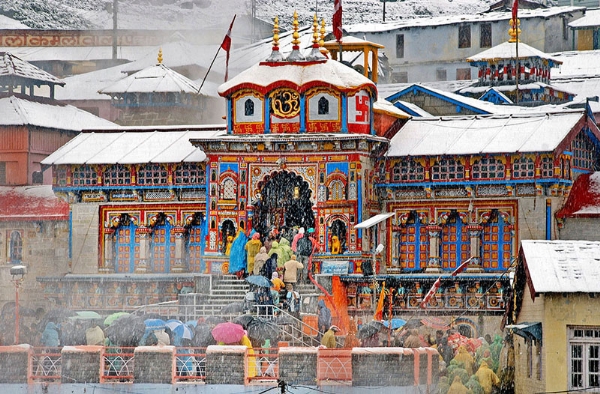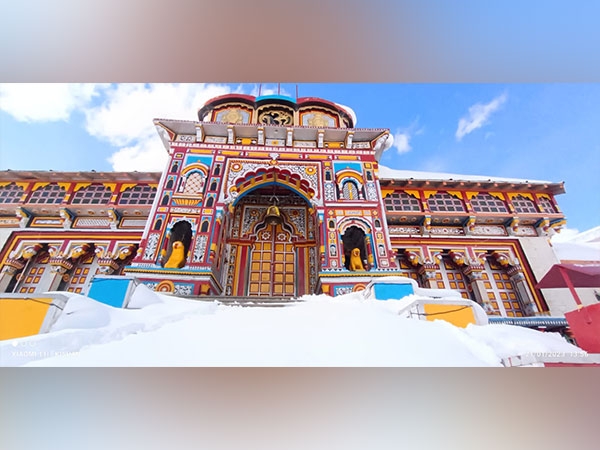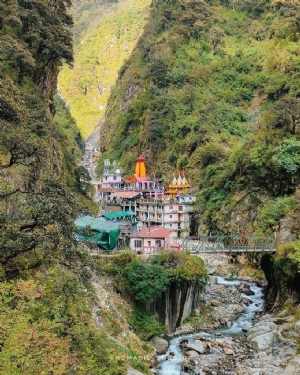NB Twitter Scan | Chota Char Dham - The spiritual & divine Yatra that every Hindu must undertake once in a lifetime
Char Dham yatra opens on the auspicious day of Akshay Tritiya of Chaitya month and remains open until Bhai Dooj.
Total Views |
The four temples that comprise Char Dham are Yamunotri Dham, Gangotri Dham, Badrinath Dham and Kedarnath Dham. Char Dham yatra opens on the auspicious day of Akshay Tritiya of Chaitya month and remains open until Bhai Dooj.

Every year amid with the great chanting of Vedic hymns or mantras, the gates of holy shrines open in the presence of thousands of devotees, and for the next six months, the doors remain open for every devotee who comes to get the darshan of their idol.
1. Kedarnath
This temple on the Garhwal Himalayan range near the Mandakini River is one of the 12 Jyotirlingas in India and the holiest shrine of Lord Shiva.
The present structure of the temple is said to be established by Adi Shankaracharya. The temple has a unique form of Shiva lingam resembling closely to the hump of a bull as Bhagwan Shiva. The temple is also one of the four major sites in India’s Chota Char Dham pilgrimage of the Northern Himalayas. Kedarnath Dham is among 275 mandirs of Paadal Petra Sthalams of Bhagwan Shiva and also the most important among the Panch Kedars.
Chota Char Dham - The spiritial and divine Yatra that every Hindu must undertake once in a lifetime
— Ankita (@AnkitaBnsl) April 18, 2023
1. Kedarnath pic.twitter.com/xTp770pxBZ
The grand structure of Lord Shiva's shrine is made of grey stone. Gauri Kund is the starting point of the trek towards the temple of Kedarnath. Kedarnath Dham remains closed off for Darshan for 6 months during winter when the entire region gets engulfed in snow and experiences extremely freezing temperatures and Deity Shifted from Kedarnath to Ukhimath
As per religious beliefs Kedarnath Dham is always blessed and Protected with the omniscient presence of Bhagwan Shiva who protects the Dham shrine diligently, This has been proven during the devastating 2013 unexpected Kedarnath flooding.
2. Badrinath
Badarinath is one of the holy shrines for Vaishnavites among the 108 divya desams incarnation of Lord Vishnu. The Badrinath temple is dedicated to Lord Vishnu and is believed to have been established by Adi Shankaracharya in the 8th century. The Badarinath temple is divided into three parts (a) The Garbha Griha or the sanctum sanctorum (b) The Darshan Mandap where rituals are conducted and (c) The Sabha Mandap where pilgrims assemble.

The name of the Badarinath tirtha originates from local word Badari which is a type of a wild berry. It is said that when Lord Vishnu sat in penance in these mountains, His consort Goddess Laxmi took the form of a berry tree and shaded Him from the harsh sun. It is not only the dwelling place of Lord Vishnu Himself but also home to countless pilgrims, saints and sages, who meditate here in search of enlightenment.
"According to Skand Puran, the idol of Lord Badarinath was recovered by Adiguru Shankaracharya from Narad Kund and was re-enshrined in the 8th century A.D. in this temple."
The famed Skanda Purana describes more about the place as "There are several sacred shrines in heaven, on earth, and in hell; but there is no shrine like Badarinath." According to Vamana Purana, the sages Nara and Narayana 'fifth avatar of Lord Vishnu' performed Penances here.
3. Gangotri
Gangotri Temple is dedicated to Goddess Ganga or River Ganga and is located in the Uttarkashi District at an altitude of 3,415 metres. It is the highest and second temple in the Chhota Char Dham circuit,which includes three more holy sites, Kedarnath, Badrinath & Yamunotri.
It is believed that the original temple of Gangotri was quite small enough and it was only during the 18th century that Gangotri temple acquired its present stature. It was during that time that Amar Singh Thapa, the Gorkha army chief constructed this temple. The temple has been constructed in adherence to the north Indian temple architectural pattern.
4. Yamunotri
The holiest Hindu Shrine Yamunotri is located in the Uttarkashi district of Uttarakhand, at an altitude of around 3185 meters above sea level. Yamunotri is preferably the first destination to launch the Char Dham Yatra Uttarakhand. It is claimed that Yamunotri Dham rains its blessings to the devotees to have a healthy and memorable spiritual journey ahead.

This shrine is dedicated to the goddess Yamuna. Yamunotri temple is believed to be constructed by the king of Tehri, Naresh Sudarshan Shah in 1839. The temple was destroyed twice due to natural disasters and was rebuilt in the 19th century AD by Maharani Guleria Devi of Jaipur. The temple design shows the solely Nagar theme.
The visitors have to undertake a trek of around 13 km from the town of Hanuman Chatti to reach the shrine.


